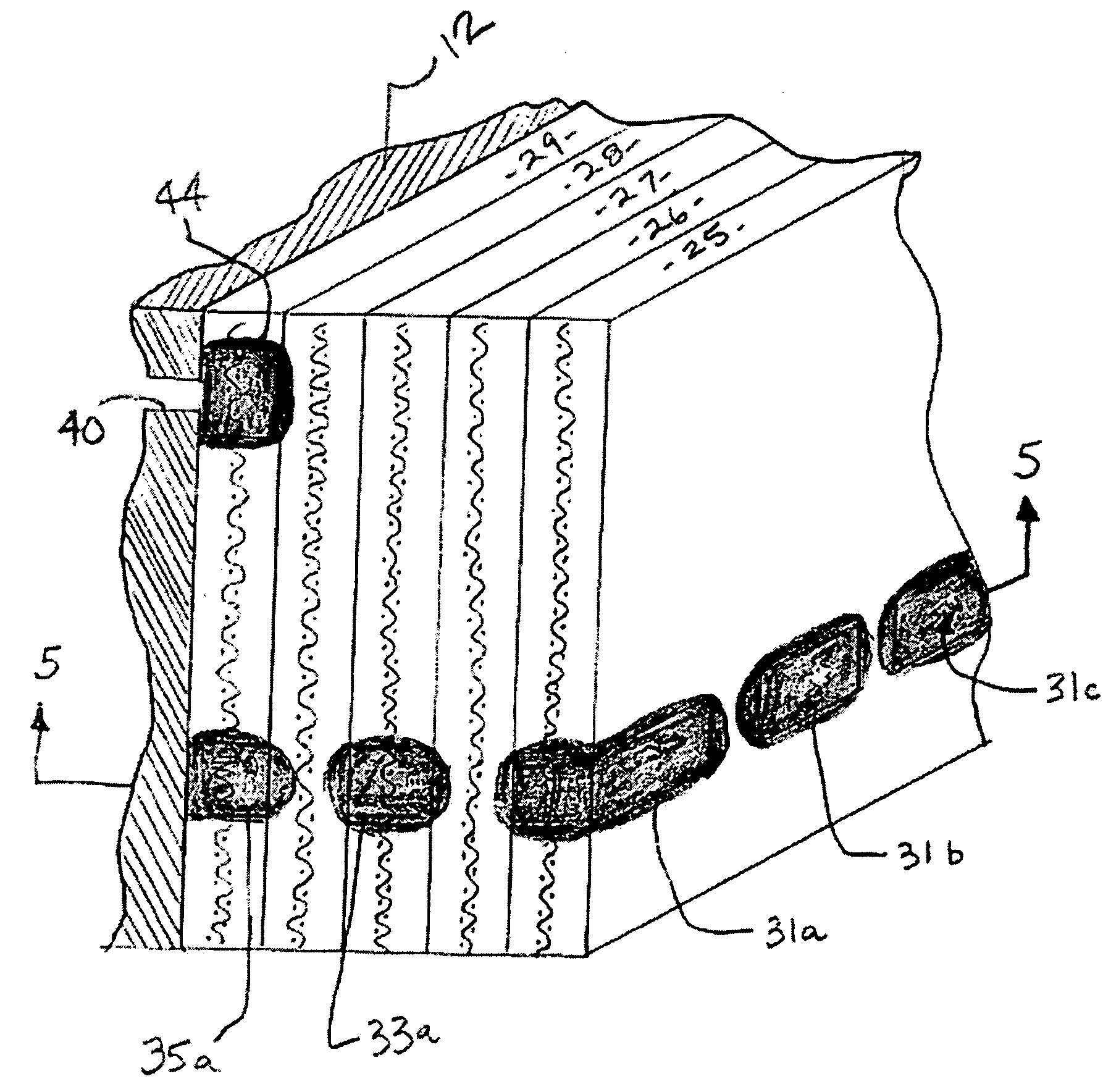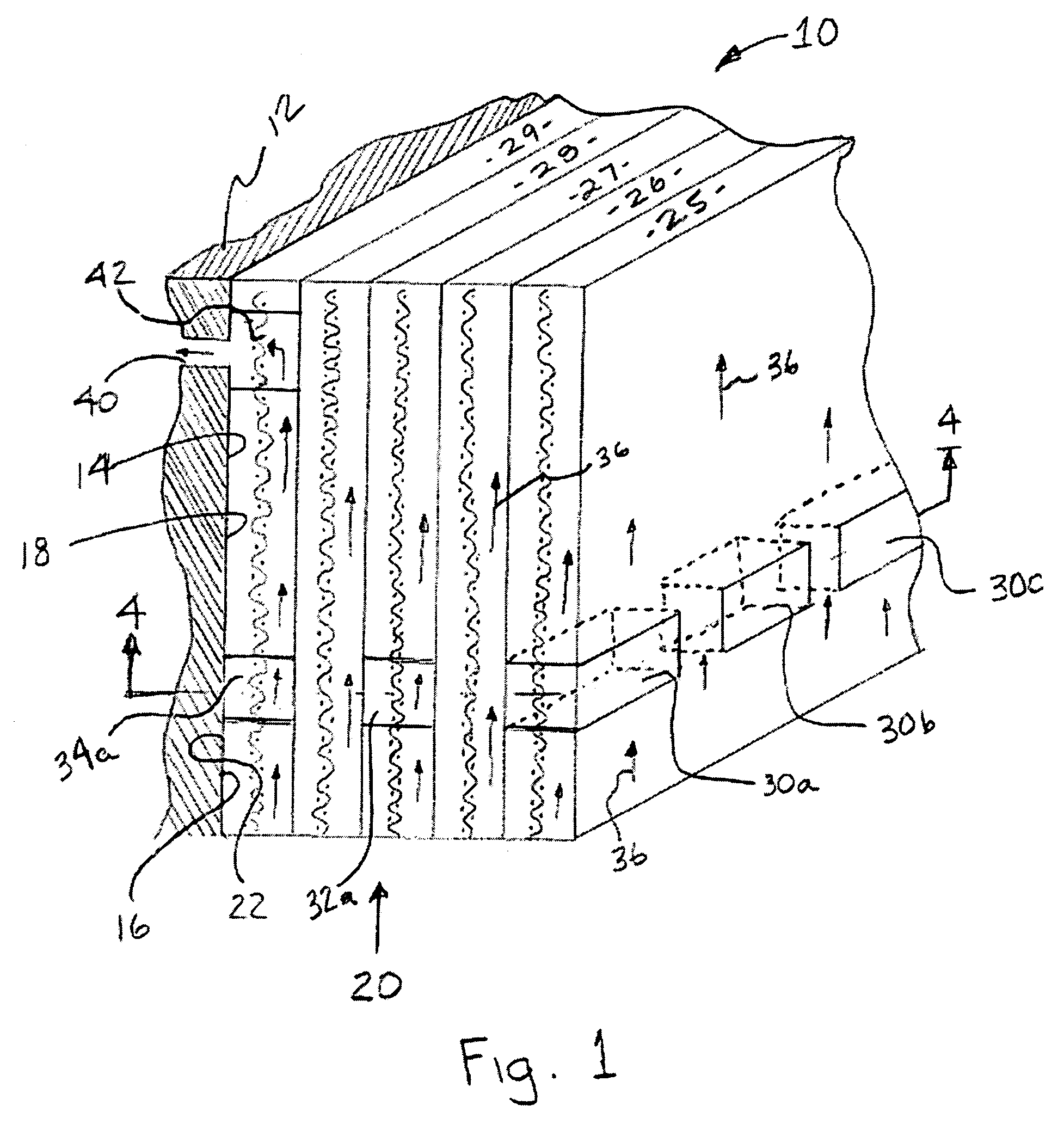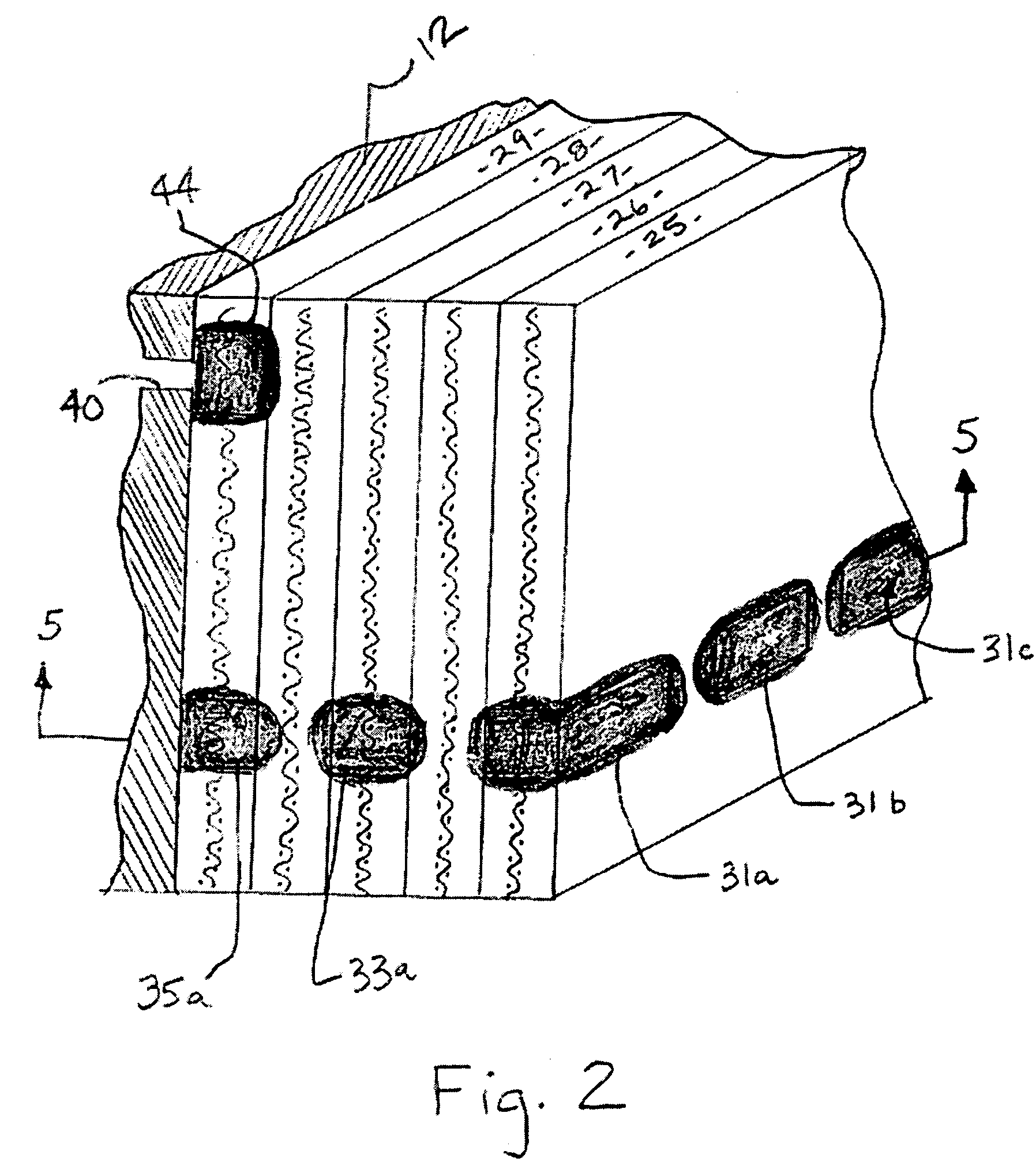Control of resin flow during molding of composite articles
- Summary
- Abstract
- Description
- Claims
- Application Information
AI Technical Summary
Benefits of technology
Problems solved by technology
Method used
Image
Examples
Embodiment Construction
[0026]The problem of resin depletion that is observed to occur following the preparation of a fiber-reinforced composite structure or component by a resin infusion process is solved by the present invention by the selective positioning of the immobilization agent in the areas of the assembly that are prone to resin depletion (i.e. vertically inclined sections of the mould or, in a VaRTM process for example, the areas surrounding the vacuum tubing), thereby enabling the formation of a final cured structure or component having a substantially uniform distribution of resin throughout its structure. It will be appreciated that the localized immobilization of the liquid resin in the vicinity of the immobilization agent prevents, or at least substantially reduces, the tendency for resin to flow out of these areas, whether under the force of gravity or by any other driving force.
[0027]In addition to providing a solution to the problem of resin depletion, there may also be instances where t...
PUM
| Property | Measurement | Unit |
|---|---|---|
| Flow rate | aaaaa | aaaaa |
| Viscosity | aaaaa | aaaaa |
| Thixotropic index | aaaaa | aaaaa |
Abstract
Description
Claims
Application Information
 Login to View More
Login to View More - R&D
- Intellectual Property
- Life Sciences
- Materials
- Tech Scout
- Unparalleled Data Quality
- Higher Quality Content
- 60% Fewer Hallucinations
Browse by: Latest US Patents, China's latest patents, Technical Efficacy Thesaurus, Application Domain, Technology Topic, Popular Technical Reports.
© 2025 PatSnap. All rights reserved.Legal|Privacy policy|Modern Slavery Act Transparency Statement|Sitemap|About US| Contact US: help@patsnap.com



